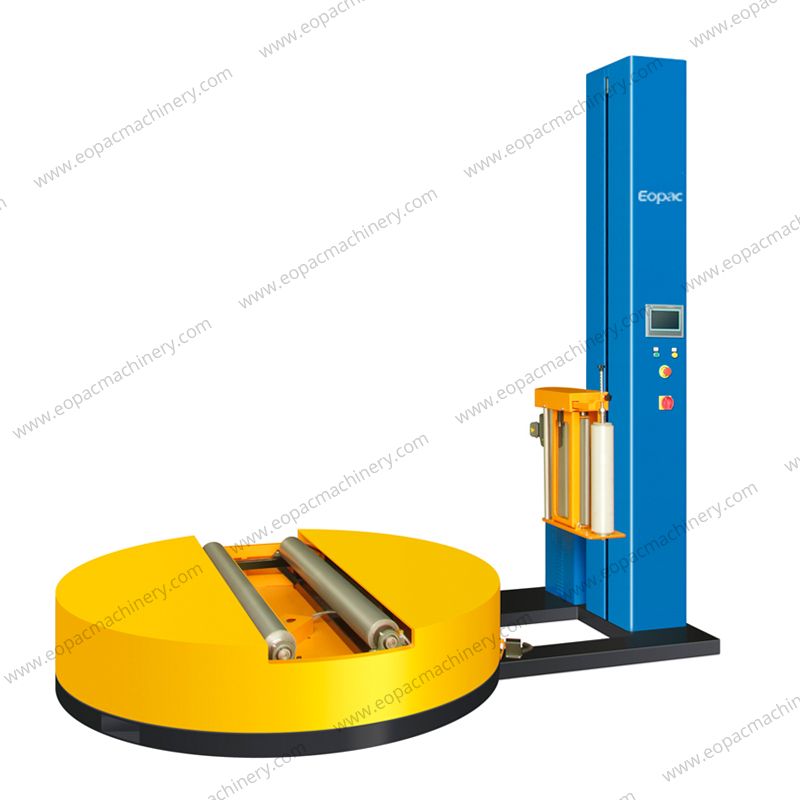What Are the Various Types of Stretch Wrapping Machines?
In today's fast-paced manufacturing and logistics environment, stretch wrapping machines have become indispensable. These machines are designed to secure and stabilize products on pallets, ensuring they remain intact during transit. Depending on the specific requirements of the operation, there are several types of stretch wrapping machines available. Each type caters to different load sizes, wrapping techniques, and operational scales. In this comprehensive article, we will explore the various types of stretch wrapping machines, detailing their unique features and applications.
1. roll stretch wrapping machine
Roll Stretch Wrapping Machine
The roll stretch wrapping machine is a practical machine for wrapping large rolls of tissue paper. It is further designed based on our turntable tray wrapping machine, which has a large capacity and can support most large and heavy rolls. Two support rollers will rotate the large roll during the wrapping process so that the roll is completely wrapped by the plastic wrap. The wrapped product is waterproof and dustproof and can be used for long-distance transportation and long-term storage.
This machine is also a good machine for packaging meltblown nonwovens and other fabrics.
2. Rotary Arm Stretch Wrapping Machines
For heavier loads or irregularly shaped items, rotary arm stretch wrapping machines are a go-to choice. Unlike turntable machines, where the load rotates, the film applicator rotates around the stationary load.
Key Features:
Handles heavier loads: These machines can manage extremely heavy or unstable loads without risk of tipping or imbalance.
Increased wrapping speed: Rotary arm machines can wrap at higher speeds, making them suitable for high-volume operations.
Customizable wrapping cycles: Advanced models allow operators to customize wrapping patterns and pre-stretch levels.
Applications:
Rotary arm machines are often used in industries like construction materials and heavy manufacturing, where loads can be both large and fragile. The stationary nature of the load ensures maximum stability during the wrapping process.
3. Ring or Orbital Stretch Wrapping Machines
Ring stretch wrapping machines, also known as orbital stretch wrappers, are designed for loads that are either long and narrow or cylindrical. The stretch film is applied by a rotating ring mechanism that wraps the load horizontally.
Key Features:
Optimal for long products: These machines are perfect for wrapping items like pipes, lumber, and textiles, which are difficult to wrap using traditional methods.
Precision film application: The ring mechanism ensures that the film is applied uniformly, reducing material waste.
Horizontal wrapping: This unique wrapping technique provides enhanced protection for long and narrow loads.
Applications:
Orbital stretch wrapping machines are particularly suited for industries that handle extruded products, such as steel pipes, aluminum extrusions, and other elongated materials. These machines provide a secure and protective wrapping for transit.
4. Robotic Stretch Wrapping Machines
Robotic stretch wrapping machines are highly versatile and offer mobility not found in stationary machines. These machines are designed to move around the load, applying the stretch film efficiently and consistently.
Key Features:
Fully autonomous operation: Robotic machines can be programmed to wrap loads without human intervention, significantly improving operational efficiency.
Compact and mobile: These machines are portable and can easily be transported to different areas of the warehouse or facility.
Flexible wrapping patterns: Advanced robotic wrappers allow for adjustable wrapping techniques, including top, bottom, and middle wraps.
Applications:
Robotic stretch wrappers are ideal for dynamic environments where loads are constantly moved, and operational flexibility is required. They are commonly used in distribution centers, third-party logistics, and warehousing operations.
5. Horizontal Stretch Wrapping Machines
Horizontal stretch wrapping machines are specialized devices designed to wrap products in a horizontal plane. They are different from standard vertical wrapping machines and are often used for specific types of loads.
Key Features:
Great for horizontal loads: This machine is optimal for loads such as doors, windows, or other wide flat products.
Highly customizable: Operators can control the wrapping tension and pattern based on the product's specific dimensions.
Durable and efficient: These machines are built to handle large items and provide a tight, uniform wrap.
Applications:
These machines are often found in industries dealing with building materials and flat goods, such as furniture manufacturers and woodworking companies.
6. Automatic Stretch Wrapping Machines
Automatic stretch wrapping machines are fully automated systems that require little to no human intervention. These machines are designed for high-speed operations and large-scale production facilities.
Key Features:
High-speed operation: Fully automatic stretch wrappers can wrap hundreds of loads per day with minimal downtime.
Integrated automation: These machines often feature conveyor systems and can be integrated into existing production lines.
Pre-programmed wrapping cycles: Operators can choose from a range of wrapping patterns and cycles to ensure the optimal wrap for each load.
Applications:
Automatic stretch wrapping machines are commonly used in high-volume production environments, such as automotive parts manufacturing and food processing plants. Their high throughput and reliability make them a preferred choice for large-scale operations.
7. Pallet Stretch Wrapping Machines
Pallet stretch wrapping machines are specialized devices designed specifically for wrapping palletized goods. These machines are available in a variety of configurations, including manual, semi-automatic, and fully automatic models.
Key Features:
Designed for pallets: These machines ensure that palletized goods are securely wrapped, reducing the risk of product damage during shipping.
Adjustable film tension: Operators can control the tension of the film to ensure a tight wrap.
Variety of models: From entry-level machines to fully automated systems, pallet stretch wrappers are available to suit any operational scale.
Applications:
These machines are primarily used in warehouses and distribution centers that handle large volumes of palletized goods. They provide a quick and efficient way to secure loads for transit.
Conclusion
Selecting the right stretch wrapping machine depends on several factors, including the type of load, the volume of goods, and the required level of automation. Whether you're handling light pallets or heavy-duty materials, there is a stretch wrapping machine that will meet your specific operational needs. With advancements in technology, these machines continue to evolve, offering better efficiency, customization, and reliability in packaging and shipping processes.




